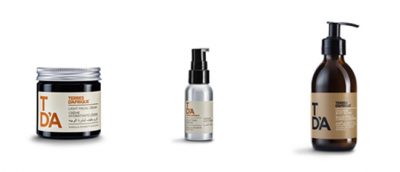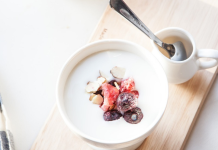
Radiant and glowing – that’s how most of us picture healthy skin. The opposite – dull, red, flaky, lined skin – is a red flag, signalling that something is missing – but is it moisture or hydration that’s needed?
 They may both refer to healing the skin by ensuring it has sufficient water, but there’s a world of difference between moisturization and hydration. What’s more, different skins need them at different times.
They may both refer to healing the skin by ensuring it has sufficient water, but there’s a world of difference between moisturization and hydration. What’s more, different skins need them at different times.
Hydration – and hydrating products – focus on getting moisture into the skin; in other words, attracting it from the external environment. But, while hydration certainly plays a role in creating the plump, ‘bouncy’ look of healthy skin, moisturization is key to maintaining it. This is the process of locking moisture into the skin, or preventing it from evaporating from the skin’s surface. In short, moisturizing helps to protect the skin barrier so that none of that precious water is lost.
Moisturise or hydrate?
While it may seem simple to say that skin that needs either moisturization or hydration just needs water, this isn’t actually the case.
Moisturising is called for when skin is dry, which isn’t a state that passes but an actual skin type, just like oily skin. Dry skin typically presents as flaky, red and irritated, and may even be a little scaly. People who have dry skin are also more likely to experience conditions like psoriasis, eczema and dermatitis. All of this is caused by the fact that the skin is struggling to keep moisture locked in; often, because of damage to the skin barrier which serves to protect the skin against irritants, from pollutants to UV rays. The good news is that it’s possible to strengthen the skin barrier by using the correct products, such as those containing hyaluronic acids.
Dehydrated skin, on the other hand, may be easier to treat because dehydration is often a temporary state caused by a loss of water. This gives rise to changes in the skin’s appearance because, starved of water, the skin becomes less adept at ridding itself of toxins. People frequently notice the signs of dehydration – such as dullness, itchiness, an increase in the noticeability of wrinkles and fine lines, and an appearance of dark under-eye circles – when they have experienced environmental changes. Seasonal change is a case in point, mainly because our skin maintains its optimal state when it isn’t challenged by fluctuations, which make the skin barrier vulnerable. Winter hits skin hardest because the use of heaters removes moisture from the air, while the drop in temperature makes it difficult for the skin to regulate moisture levels. Not that the skin is unaffected by summer: as skin grapples with the warmer, more humid air, oil gets trapped on the surface of the skin, making it greasy.
Certain people are more likely to feel the effects of dehydrated skin particularly keenly. For example, those who suffer from rosacea are more prone to flare ups if they become dehydrated, while dehydration can also increase symptoms for those already experiencing skin sensitivity, exacerbating any redness, dryness and itchiness.
 How to help
How to help
Both of these skin conditions can be helped by adding water to the skin. But it’s just as clear that not any old form of water will do. What’s more, it may be helpful to introduce some lifestyle changes, too.
This is especially important when it comes to hydrating the skin, where the goal is to ensure long-lasting, positive change by literally adding water from the outside in. The most obvious way to do this is by drinking plenty of water, but it will also help to include essential fatty acids (Omega oils) in the diet, in the form of fatty fish like salmon and mackerel. Alcohol and caffeine should be limited, along with cigarettes.
It’s also a good idea to take physical measures to protect the skin: sunscreen is a must, but skin should also be shielded from wind and cold. One way of nurturing the skin after it has faced a great deal of stress is by using gentler products, and avoiding very hot water. This is especially important when washing your face and showering; in fact, it’s a good idea to keep your shower shorter than 10 minutes.
Finally, boosting the quality (and length) of your sleep may help, especially as this will address another lifestyle enemy that saps skin: stress.
 Products that pacify
Products that pacify
It’s equally important to pay attention to the products used on the skin. For a start, it’s best to opt for clean beauty products: not only are they more gentle on the skin, but because they contain fewer toxins, their active ingredients are more readily available to the skin as it doesn’t waste energy trying to access them. The effects are especially intense if you are able to choose organic skincare – and setting the gold standard are products that can be classified as vegan skincare, plant-based skincare or sustainable skincare.
 It’s equally important to consider the ingredients used, as some are more proficient at attracting water to the skin than others. Key is sodium hyaluronate, which – although derived from hyaluronic acid – is more effective than the latter because it comprises smaller molecules which are better able to penetrate the epidermis. This special ingredient may be found in Terre D’Afrique’s Light Facial Cream and Uplifting Serum, which both also contain glycoproteins in the form of aloe ferox plant extract. Vitamin E is another hydration superstar, along with glycerin (found in Light Facial Cream and Terre D’Afrique’s Omumbiri Body Butter) and omegas and other fatty acids; critical actives in many of Terre D’Afrique’s African oils, including jojoba and marula.
It’s equally important to consider the ingredients used, as some are more proficient at attracting water to the skin than others. Key is sodium hyaluronate, which – although derived from hyaluronic acid – is more effective than the latter because it comprises smaller molecules which are better able to penetrate the epidermis. This special ingredient may be found in Terre D’Afrique’s Light Facial Cream and Uplifting Serum, which both also contain glycoproteins in the form of aloe ferox plant extract. Vitamin E is another hydration superstar, along with glycerin (found in Light Facial Cream and Terre D’Afrique’s Omumbiri Body Butter) and omegas and other fatty acids; critical actives in many of Terre D’Afrique’s African oils, including jojoba and marula.
 These ingredients have proved highly effective: collectively, as a blend of occlusives (which help seal in hydration by creating a barrier on the skin), like humectants (which draw moisture from the air and trap them in the epidermis) and emollients such as omega fatty acids (boost skin’s appearance by strengthening that all important skin barrier), they are both to address needs for both moisturizing and hydration.
These ingredients have proved highly effective: collectively, as a blend of occlusives (which help seal in hydration by creating a barrier on the skin), like humectants (which draw moisture from the air and trap them in the epidermis) and emollients such as omega fatty acids (boost skin’s appearance by strengthening that all important skin barrier), they are both to address needs for both moisturizing and hydration.
No matter what your skin type – whether dry or dehydrated – there’s little doubt that a blend of both moisturization and hydration can bring you further to fulfilling your ultimate skin goal: smooth, blemish free skin that feels as good at it looks.





